- Administrator
- Albums and Singles
 Natalie Chami is best known for being one-third of Chicago's Good Willsmith, but she has also been a prolific solo artist, releasing a slew of cassettes on labels like Hausu Mountain since 2011.  Love Sick is Chami's debut full-length and it is quite a stunner: based on Chami's past, I was merely expecting a suite of atypically skillful analog synth sketches and experiments.  Instead, Love Sick is a gorgeously sultry and blearily hypnagogic feast of visionary outsider soul.  Happily, most of Chami's experimental and improvisatory impulses survived that transformation intact, which is what makes this such a unique album: Chami does not downplay her more lysergic and unpredictable edges so much as find a way to shape them into languorously seductive hooks.  When that happens, some great songs result, yet the more impressive achievement is how Love Sick coheres into such an intermittently dark and absorbing whole, like an erotic dream that subtly morphs into a nightmare.
Natalie Chami is best known for being one-third of Chicago's Good Willsmith, but she has also been a prolific solo artist, releasing a slew of cassettes on labels like Hausu Mountain since 2011.  Love Sick is Chami's debut full-length and it is quite a stunner: based on Chami's past, I was merely expecting a suite of atypically skillful analog synth sketches and experiments.  Instead, Love Sick is a gorgeously sultry and blearily hypnagogic feast of visionary outsider soul.  Happily, most of Chami's experimental and improvisatory impulses survived that transformation intact, which is what makes this such a unique album: Chami does not downplay her more lysergic and unpredictable edges so much as find a way to shape them into languorously seductive hooks.  When that happens, some great songs result, yet the more impressive achievement is how Love Sick coheres into such an intermittently dark and absorbing whole, like an erotic dream that subtly morphs into a nightmare.
Chami has quite an unusual background for someone making a sexy bedroom soul album, as she is both a member of an established improv/experimental music ensemble and a classically trained vocalist.  The latter seems to only manifest itself in Chami's cool assurance as a vocalist, but her experience as an improviser/analog synth artist clearly had a lot of influence over how Love Sick was performed and recorded.  Aesthetically, however, Chami seems to be far more of a kindred spirit to her stated influences Aaliyah and Sade than, say, Alessandro Cortini.  Love Sick's simple template is established quite quickly and effectively with the opening "I Saw The Way": a lovely, slow-moving chord progression; some understated synth hooks; some hallucinatory textures fluttering around the periphery; and a whole lot of cooing, breathy vocals.  One significant item that is missing from that list is any kind of beat or propulsive bass line, which seems like a very deliberate decision for a couple of reasons.  For one, Chami took a very pure, organic, and spontaneous approach to crafting these pieces, performing everything live and improvising her loop-heavy vocals with no overdubbing.  More significantly, her entire aesthetic is a deeply understated and blissed out one.  Love Sick certainly has a lot in common with pop music, but it does not sound so much like sexy R&B as it does like sexy R&B that has been dissolved into an undulating haze.  Chami's aesthetic is essentially a bittersweet dreamscape of simmering passions, yearning, and languorous eroticism.
Occasionally, however, Chami will throw in a sampled beat, as she does on the stumbling and stutteringly gorgeous would-be single "Disgrace."  If the vocals were removed, it would basically just be a killer patch of densely throbbing bloops and chirps over a lurching, broken-sounding beat that would be a highlight on any contemporary analog synth album.  In Chami's hands, however, it becomes a rapturous bit of hallucinatory pop heaven filled with lush harmonies and oddly halting and precarious-sounding vocal phrasings.  As much as I enjoy Chami’s endless supply of cool synth motifs and her talent for crafting appealing hooks, it is probably the almost uncomfortable intimacy of her vocals that elevates Love Sick into such a compelling album.  At her best, Chami is not a synth wizard dabbling in soul/R&B pastiche–she is a bedroom pop Brian Wilson trying to distill a swirl of ineffable emotions into elegantly woozy, blurred, and breathy dreampop (and she just happens to wield a synth quite skillfully too).
Chami is not entirely pop-minded though, so Love Sick is also peppered with some more atmospheric pieces and an occasional bit of indulgent spacey weirdness, such as the lysergic and proggy "You’re Trying To Drive."  I tend to like the "pop" songs the best though, as there are already plenty of artists making fine dreamy ambient or retro-futurist analog synth vamps, but no one but Chami (and perhaps prime LA Vampires) can turn out a soulful and sensuous slow-motion jam quite like "My Side My Sign."  That said, some Love Sick's more abstract pieces are uniquely strange, particularly the closing "Stories," which is a surreal miasma of hallucinatory textures, blurting synth swells, tumbling melodies, and pure heartache.  In fact, it is a perfectly devastating way to end the album, as it feels like all of the album's gorgeous soft-focus pop structures are ultimately pulled apart and obliterated by a final black hole of regret that ends with the line "I don’t want to tell the story anymore cuz you’re gone."  On paper, that might sound like melodrama, but it is not.  Instead, it feels like a final curdled note on an album that seems to try valiantly to condense all the pleasure and pain of a shared life into one short album.
To my ears, Love Sick does not have any real flaws or weak songs, but it can certainly be a challenging and unnervingly intimate listen at times and most of the usual caveats regarding improvised music apply.  That said, Chami often does a remarkable job of deftly sidestepping the limitations of live analog synthesizer performance, masking the unavoidably repetitive structure with well-placed hooks, actual choruses, and hallucinatory gnarled intrusions of mangled notes.  Also, while I certainly prefer the more structured and melodic pieces, Love Sick's more amorphous and atmospheric pieces make the album a far more mysterious and deep affair than it would have been if Chami had simply written a full album of slow jams.  Of course, the hookier pieces are the immediately gratifying ones, so it took me a while to appreciate the rest, but it was worth the time (it is dangerously easy to initially dismiss the album as a handful of great songs padded by moody filler).  Love Sick is a slow-burner, as it has sneakily become one of my left-field favorite albums of the year, hitting a perfect balance between experimentation, craftsmanship, unfiltered emotion, and smoldering intensity.  I am tempted to glibly describe Love Sick as the greatest analog synth break-up album of all-time, but that would be a disservice (even if it is probably true): Chami certainly uses heartache and longing as a starting point, but beautifully transcends expectations to weave a truly immersive and complex fever dream where eroticism and pain swirl deliriously together.
 
Read More
- Administrator
- Albums and Singles
 I embarrassingly came very close to sleeping on this brilliantly unhinged and raucous album, as most critically acclaimed rock music these days tends to underwhelm me.  Omaha's Nance is an entirely different story though, as Negative Boogie does a damn fine job recapturing the hostility and recklessness that made bands like Suicide and The Cramps so much cooler than everyone else.  Of course, Negative Boogie does not sound at all like either of those bands, but Nance's incandescent intensity and viscerally slashing guitars have a way of making even a Merle Haggard cover sound feral and frightening.
I embarrassingly came very close to sleeping on this brilliantly unhinged and raucous album, as most critically acclaimed rock music these days tends to underwhelm me.  Omaha's Nance is an entirely different story though, as Negative Boogie does a damn fine job recapturing the hostility and recklessness that made bands like Suicide and The Cramps so much cooler than everyone else.  Of course, Negative Boogie does not sound at all like either of those bands, but Nance's incandescent intensity and viscerally slashing guitars have a way of making even a Merle Haggard cover sound feral and frightening.
In general, there are few things that scream "this is not for me" quite like a white guy playing the blues in 2017, yet the opening "More Than Enough (Reprise)" is exactly that and it instantly hooked me.  Of course, "the blues" channeled through David Nance is quite a unique beast, as this particular example opens with a molten eruption of jarring guitar squall.  A standard-issue blues shuffle eventually crawls out from under that gnarled chaos, but it feels wonderfully sick and wrong in Nance's hands, as he seethes with desperation and constantly subverts anything songlike with dissonant flurries of strangled guitar.  It feels like the final performance of a rockabilly legend who just fell off the wagon in a bad way and will likely hang himself or murder a prostitute in his hotel room later that night unless someone intervenes.  The anthemic title piece that follows is a bit too straightforward for my taste, sadly, but Nance strikes gold again with his lovely, bittersweet cover of Haggard’s "Silver Wings."  For the most part, it is quite tuneful and reverent, blending male-female vocal harmonies and some nice pedal steel guitar, but it sounds like a goddamn plane (or UFO) crashes into the song around the halfway point, nearly eclipsing the whole song with a blast of snarling feedback, amp noise, and blooping electronic chaos.  Amazingly, the song somehow rights itself after that deliciously invasive "solo," though Nance manages to get in one nice farewell blast of feedback after the final chord.
Aside from nimbly walking the tightrope between explosive noise and tight songcraft, Nance also has an intriguing penchant for something similar to pastiche, yet quite a bit more inspired than that word implies: it is easy to identify a lot of his influences, but they are almost always filtered through his own ragged and nihilistic sensibility. Admittedly, he misses the mark a bit from time to time: the jangly "Give It Some Time," for example, sounds like it could be an Okkerville River demo (albeit quite a good one).  For the most part, however, it sounds like someone gave their talented insomniac friend a bottle of whiskey and a mixed tape of their favorite Big Star, Rolling Stones, and Gun Club songs and was repaid the next morning with a freshly recorded collection of his own wild, half-remembered, and spontaneous-sounding interpretations of them all.  Some songs are admittedly better than others, yet Nance has that rare and intangible gift that makes nearly everything he touches seem sincere, fiery, and right on the precipice of being out of control. Though there are plenty of aspects to Negative Boogie that I love (broken-sounding junkyard percussion, raw power, messy guitars, great hooks, the yelping and poetic stream-of-consciousness lyrics), it is primarily Nance's seemingly effortless "rock savant" persona that makes this such an unusual and transcendent album: he is equally at home howling about "cheeseburger amphetamines" ("DLATUMF Blues") or unleashing a beautifully smoldering and unstated guitar solo ("River With No Color").  Whether I understand where he is coming from or not, Nance always seems like he is trying to convey something extremely important and that he really fucking means it.  That is a rare thing in rock music these days.  When he is at his best, David Nance rocks like the world is ending.
I hesitate to use words like "raw" or "real" to describe Negative Boogie, as they tend to be overused and cynical shorthand for an artist's attempt to create the illusion of authenticity.  They seem to apply in their purest sense here though, as Negative Boogie feels entirely uncalculated, unpolished, explosive, and devoid of irony.  Nance's music, like that of fellow Nebraskan Simon Joyner, feels born of bleak Midwestern hopelessness, yet he has a striking talent for wresting poetry and black humor from that darkness (the latter best expressed in the ranting, almost conversational "Don’t Look at This Ugly Motherfucker Blues").  Amusingly, Nance and his backing band splurged on an actual studio session for this album rather than his usual home recording set-up, but somehow managed to use that opportunity to make an even more angry, frayed, and snarling album than usual, bashing out the entire thing in a single day.  Negative Boogie is just as no-frills as Nance's other albums, but now his trainwreck majesty is finally as loud and physical as it should have been all along.  This is one of those rare albums where the hit-to-miss ratio is almost irrelevant: song-wise, Negative Boogie is probably only a half-great album, yet the whole thing feels like a series of undiluted dispatches from an artist who feels like underground rock personified.  In a perfect and just world, Nance will be every bit as revered and influential as Robert Pollard once his body of work gets a bit more substantial: if Guided By Voices are the Beatles of indie rock, Nance and his band make a strong case for being the Exile-era Stones.
 
Read More
- Administrator
- Albums and Singles
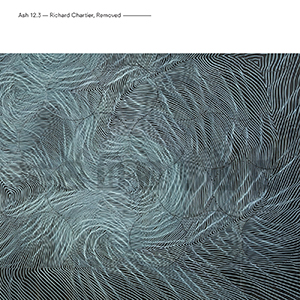 With both of his primary projects releasing new material at nearly the same time, it becomes tempting to compare and contrast Richard Chartier’s academic-tinged solo work with the slightly campy (at least in presentation) Pinkcourtesyphone, and at the superficial level there is a lot of similarity. Both Removed and Something You Are Or Something You Do are slow, sparse works that at times drift into near silence, but besides the mood and presentation, the actual compositional approach separates them most. The two are rather distinct works that each capture part of Chartier’s style extremely effectively.
With both of his primary projects releasing new material at nearly the same time, it becomes tempting to compare and contrast Richard Chartier’s academic-tinged solo work with the slightly campy (at least in presentation) Pinkcourtesyphone, and at the superficial level there is a lot of similarity. Both Removed and Something You Are Or Something You Do are slow, sparse works that at times drift into near silence, but besides the mood and presentation, the actual compositional approach separates them most. The two are rather distinct works that each capture part of Chartier’s style extremely effectively.
Ash International/The Tapeworm
Right from the onset of "Removed 1" (one of two lengthy pieces that comprise the album) the more clinical tendencies of Chartier's work are on display.What sounds like the ambience of an empty room is presented: a bit of still air and only a hint of environmental sounds slip through but are not at all easily decoded.Subtle panning makes it clear that there is actually something to be heard, as empty and spacious though it might be.Eventually more distinct sounds appear:icy and slow, but they carefully drift in and fill out the mix.The piece stays extremely hushed for most of its duration, but it is that subtlety which makes it so captivating.Eventually the entirety of the piece becomes more commanding, a pastiche of rich electronics and sounds that at times rumble the low end, and at others are near tinnitus inducing.Towards the end he gets a bit more forceful with the larger, more enveloping tones that appear, but it is clearly an experience designed for headphones.
For "Removed 2", Chartier once again accomplishes quite a lot drawing from an intentionally limited array of sounds.Opening with a passage of what almost could be wind, the volume is adjusted here and there but on the whole the piece stays rather consistent.It is comparably even more sparse:a gentle hum through frigid air for much of its opening.There are multiple changes and developments throughout the piece's 23+ minute duration, but they are so intentionally minute and understated that significant attention is required to appreciate them.
samples:
 
 Something You Are Or Something You Do, the latest Pinkcourtesyphone release, seems like a proper fit for the cassette format.For a project so tinged with vintage imagery, the medium is perfect.The analog imperfections of the tape work as well, as the gentle hiss adds to the barbiturate haze in its own way, but would have been entirely distracting for Removed.Right at the start "But it Felt/In Other Dreams" is far more commanding:a hazy, almost spacy wall of sound extending out with just the right amount of rumble to it.Despite some shimmering passages that shine through, it is a rather bleak and haunting bit of music, amongst the darkest in the PCP catalog.
Something You Are Or Something You Do, the latest Pinkcourtesyphone release, seems like a proper fit for the cassette format.For a project so tinged with vintage imagery, the medium is perfect.The analog imperfections of the tape work as well, as the gentle hiss adds to the barbiturate haze in its own way, but would have been entirely distracting for Removed.Right at the start "But it Felt/In Other Dreams" is far more commanding:a hazy, almost spacy wall of sound extending out with just the right amount of rumble to it.Despite some shimmering passages that shine through, it is a rather bleak and haunting bit of music, amongst the darkest in the PCP catalog.
The other side of the tape, "She Who Controls" is cut from a similar cloth, but has a greater density and sense of texture to it.The errant crackle gives a nice depth to the frigid roar that surrounds it.Compared to what preceded it, there is less change and more sustained, cavernous like dynamics to the piece.Structurally it is as stripped down as Chartier’s work on Removed, but with more demanding, forceful sounds.The ending is perhaps the most striking part of the composition, however, with a quick transition to lightness and bell-like tones that are far less oppressive than what preceded it.
On the surface, Richard Chartier's solo work and Pinkcourtesyphone may seem quite alike:both are projects of lengthy compositions, often kept at rather quiet volumes, and comprised of sparse, electronic tones and textures.Listening to them back to back, however, the distinction is very clear.Removed comes from more of a sound art background:classically minimalist with staunch attention to detail and structure.It is clinical, but not cold or inhuman in its character.Comparatively, Something You Are feels less rigid, yet there is a malignance in its enchanting ennui.It feels structurally looser, and a greater sense of rawness due to the more dissonant sounds Chartier is working with.But what it comes down to is that the two sides of this one brilliant artist’s work compliment each other perfectly, and both are essential listening, in my opinion.
samples:
 
Read More
- Administrator
- Albums and Singles
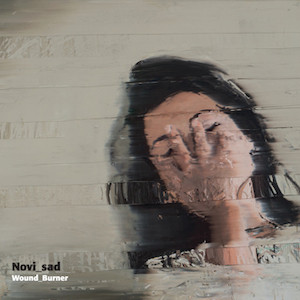 Compared to the multimedia project Sirens from last year, Thanasis Kaproulias’s latest work as Novi_sad is more of a return to his older style as far as composition goes. The single piece that makes up this album may be less concept-heavy, with the only information included being that is is based on environmental recordings in the US, Sweden, Brazil, and the Greek countryside. But even stripped back to just music, Wound_Burner excels in both its diversity and its sense of cohesion. Throughout the 45 minutes he mixes in digital interference, noisy found sounds, traditional electronics, and even voice (courtesy of Irini Kyriakidou in a swirling, yet structurally consistent and gripping album.
Compared to the multimedia project Sirens from last year, Thanasis Kaproulias’s latest work as Novi_sad is more of a return to his older style as far as composition goes. The single piece that makes up this album may be less concept-heavy, with the only information included being that is is based on environmental recordings in the US, Sweden, Brazil, and the Greek countryside. But even stripped back to just music, Wound_Burner excels in both its diversity and its sense of cohesion. Throughout the 45 minutes he mixes in digital interference, noisy found sounds, traditional electronics, and even voice (courtesy of Irini Kyriakidou in a swirling, yet structurally consistent and gripping album.
Leading off with near silence and echo-heavy field recordings, the piece is soon broken up with some heavy low end rumble and interrupting knocking noises that sound almost too lifelike.Far off traffic and sirens are made all the more sinister by the rumbling drone that surrounds them, using familiar sounds to disquieting effect.The sounds slowly drift off into silence before Kaproulias introduces a flat, almost vacuum like drone to the mix.It is intentionally monotonous, but is soon broken up by some jarring, violent explosive-like sounds that pummel through with a shocking intensity.
The mechanical, humming-like drone that follows is uncomfortably sparse and repetitive, because based on what preceded it, I was just waiting for another shocking outburst.Glitch fragments and found, rough sounds are peppered throughout, and kept me on edge for another harsh blast to occur.Even when it does not, the droning hum is amplified and becomes abrasive enough, but is soon paired with the voice of Kyriakidou, giving some semblance of humanity to the otherwise industrial disaster mood that preceded it.
This is a turning point for Wound_Burner, because the remainder of the composition is notably less menacing in comparison.Crackling, processed static like layers are blended with an almost conventional sounding passage of synthesizer.The sparse arrangement makes for a nice counterbalance to the chaos that preceded it, and even once some odd found sounds are added into the mix everything stays rather pleasant.The percussive rattling juxtaposes the hypnotic synth drone very well, making for a lovely, if somewhat odd pairing.
Atop the electronics, Kaproulias adds sloshing water and more vocals by Kyriakidou, filling out the mix nicely and taking the second half in a lighter, more inviting direction, even if the mix is dense and there is a significant amount of strange activity going on.Even some chirping birds are added in, seemingly leading the work into a peaceful, pastoral conclusion.Things do not stay as they seem though, and the sound drifts back into noisy territories more than a few times before ending on a slightly bleak, though not necessarily aggressive note.
There may not be a luxurious art book to accompany Wound_Burner, but the latest release from Thanasis Kaproulias stands perfectly on its own as a purely audio product.From its harsh, often jarring and occasionally terrifying first half to the more musical, placid second portion, I found the evolution and development of the work the album’s strongest asset.Never did I find anything predictable, and the strength of the record is not just its varied nature, but also Kaproulias’s expertise in shaping sounds, familiar and anything but.
samples:
 
Read More
- Administrator
- Albums and Singles

Nazoranai is the supergroup of Keiji Haino, Oren Ambarchi and Stephen O'Malley. For close to four decades, Haino has been a legendary figure in Japan's avant-garde community through his commanding presence in the band Fushitsusha and numerous solo ventures. Ambarchi, a prolific electro-acoustic composer of heavy ambience and hypno-rock, has long stood at the leading edge of Australia's experimental music scene, while O'Malley remains a principle architect for the drone / doom metal project Sunn O))) in harnessing extreme sub-harmonic frequencies.
Collectively, Nazoranai operates as a live recorded collaboration, although Haino is quick to point out the difference between the words "nazoranai" (which in Japanese calligraphy means "not repeating," as in developing a distinct, individual style) and "sokkyō" (referring specifically to improvisation). In this parsing of terms, the group separates themselves from the free-music scene, which can be just as convention-bound as the established genres from which improvisers hope to escape.
On the trio's third album, Beginning To Fall In Line Before Me, So Decorously, The Nature Of All That Must Be Transformed, Nazoranai explore two side-long tracks of superb abstraction. Ambarchi and O'Malley provide the perfect brute-rock rhythm section to Haino's recklessly pure expression through instrument and voice. Blurred noise, dark hurdy-gurdy and thunderous harmonics build an accretive mantra of jagged electricity.
While Haino's extensive discography resists easy interpretation, he constantly challenges himself to further his art by channeling the unknown. Shifting from his native Japanese to English, he asks: "Do you still have a mystery?" This existential plea could apply to the artist's own deep inquisitions or stand to confront his audience about that which eludes their understanding.
W.25TH / Superior Viaduct is proud to present Nazoranai's latest work, recorded at SuperDeluxe in Tokyo, which marks the band's first release on an American label.
Read More
- Administrator
- Albums and Singles

The Centre Cannot Hold was recorded over ten days by Steve Albini in Chicago. The music exists not in space, but in a space; it is a document of an event, of a room, and of the composer within it. It is music that is not fully controlled and appears to be anxiously, often violently competing against its creator.
An exercise in limitation and chromatic saturation, The Centre Cannot Hold is an attempt at transcribing a spectrum of glowing ultramarine into sound.
More information can be found here.
Read More
- Administrator
- Albums and Singles
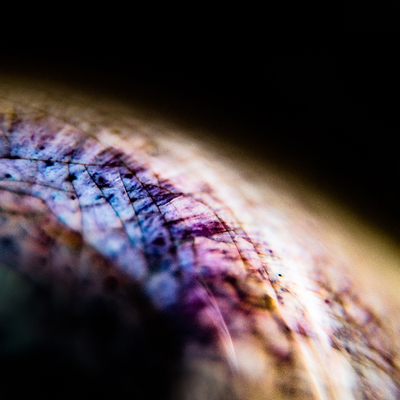
Emptyset stand at the vanguard of electronic music. With each release, they stretch boundaries and explore new methods of creating sounds with scientific precision. On their EP Skin, Emptyset (the duo of James Ginzburg and Paul Purgas) bring together techniques they developed through their 2017 LP Borders, exploring structural aspects of ritual music and non-Western composition and combine them with recent performance work examining microtonal vocalization and acoustic qualities of materials. This is the first time Emptyset has presented a body of work using entirely acoustic production methods.
The compositions of Skin are all focused around structure, texture, and rhythm captured through recordings of a custom string instrument, drums, and physical granular materials modulated in real-time, alongside tonal vocal elements.
More information can be found here.
Read More
- Administrator
- Albums and Singles

Jan St. Werner summons flux and fragmentation on Spectric Acid, building up the record's blistering, locomotive beat structures around the correlation of musical spectra. Their movements triggered in part by peaks in frequency envelopes, rhythms buckle and fracture according to a complex logic that slides past aural perception and harmonic resolution; a “phenomenological alchemy” (Rădulescu) takes shape among unsteady synthesizer whirls and stammering percussive phrases. The effect is deadly, paralytic; but listeners willing to surrender to Spectric Acid’s movement might find themselves taken to wider horizons of trance. Crucially, Werner turned also to the ceremonial rhythms of West Africa in his shaping of Spectric Acid’s bending timescales, and one can hear a clear impress of Vodoo drumming in the way rhythmic patterns cross converse, teeter off-beat, and rapidly redouble.
Though it shares with 2016’s Felder (Fiepblatter Catalogue #4) a desire to spill beyond metric linearity and notated time, Spectric Acid strays from that record’s breathy spatiality towards more pointed concerns with motion and the liberation of rhythm. In pursuit of this new direction, Werner borrows, on the one hand, from the structural techniques championed by the Spectralist school of the 1970s; breaking free of the tempered system through a focus on frequency and timbre, spectral composers like Gérard Grisey and Horațiu Rădulescu introduced sweeping, tectonic temporalities untroubled by notes and intervals, refining what Edgard Varèse before them had evangelized as a fragmentary, atomistic approach to form given to a “[constant] changing in shape, directions, and speed.”
A record both brute in force and exacting in its sensitivity to perception’s effective limits, Spectric Acid offers fresh glimpses of the deft compositional grasp Werner has developed across over two decades of practice, whether in Mouse on Mars and Microstoria or on his growing log of solo records. Treat it less as a document than a potent sonic distillate, to be taken on an empty stomach for full effect.
More information can be found here.
Read More
- Administrator
- Albums and Singles

Michael Wells, historically of Greater Than One, GTO, Tricky Disco, Technohead, S.O.L.O., and many more incarnates has unveiled a bunch of new and previously unreleased recordings under the Dataflow Recordings umbrella.


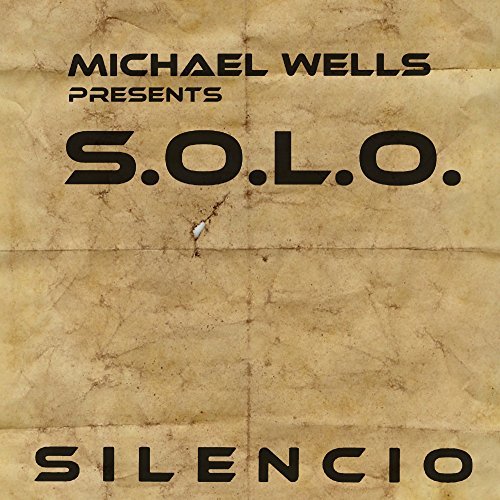
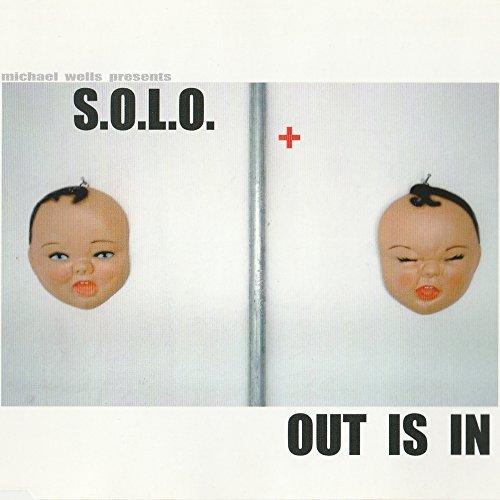
four S.O.L.O. releases have been made available: American Echo's, Low Impact, Silencio (originally recorded in 2012), and Out Is In (originally released in 1999).
Check out the video for "Days Gone By" off American Echo's here.

a new Tricky Disco single, "I Wanna Be Loved" is now available with two older tunes on the Cosmic Tones EP

numerous older and new tracks are available by Technohead

as well as Tech House Collection by G.T.O.
These are all available digitally from the following places:
- iTunes: https://goo.gl/h2zqKn
- Amazon: https://goo.gl/MdQX4e
- Google Play: https://goo.gl/YUiHjr
- Beatport: https://goo.gl/kLzEUE
- 7digital: https://goo.gl/9jc72D
- Junodownload: https://goo.gl/fWcn98
Dataflow @ Beatport: https://goo.gl/GZLiJf
Read More
- Administrator
- Albums and Singles
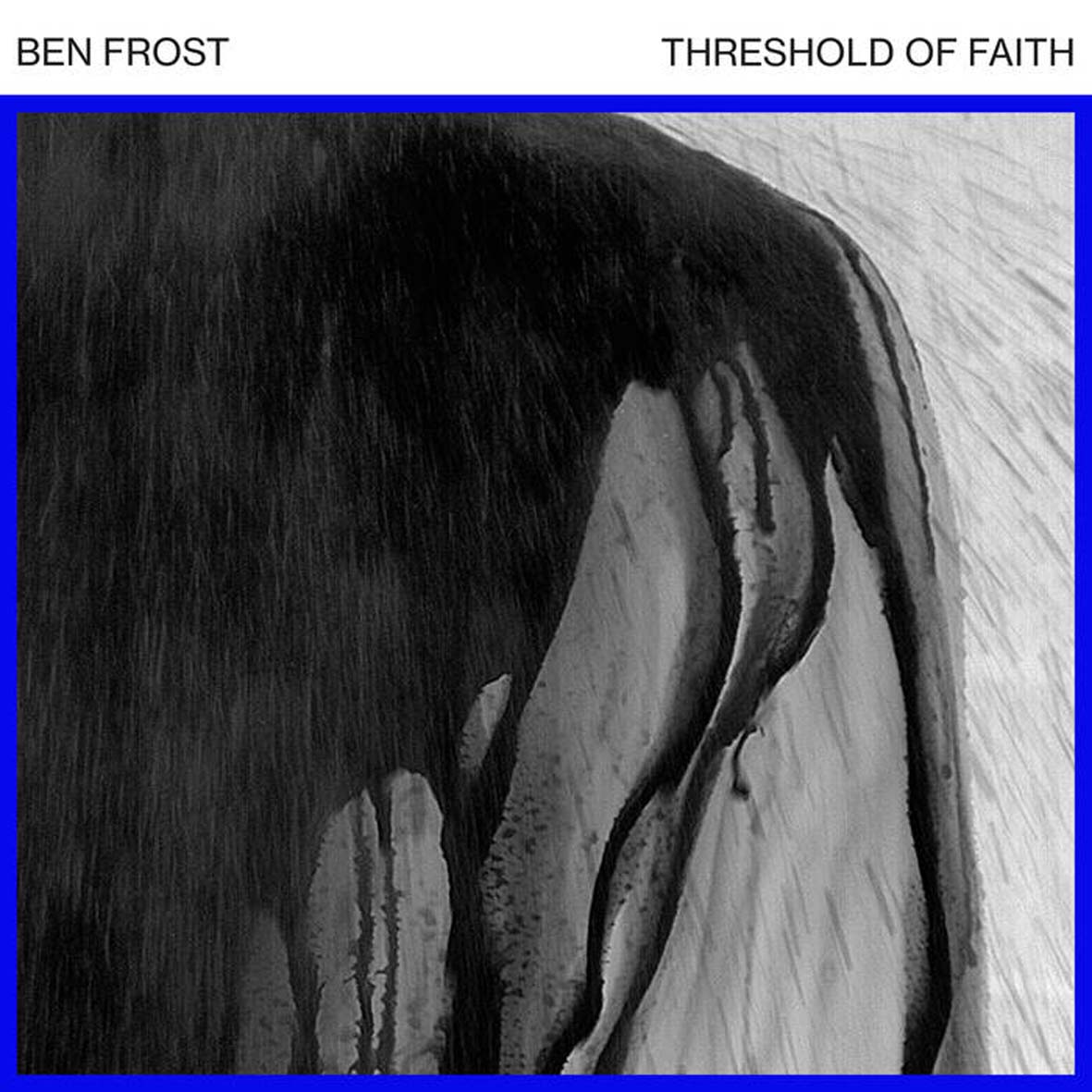 Last summer, Ben Frost flew to Chicago to record with Steve Albini for two weeks, an engineer who certainly shares his appreciation for raw power.  It turned out to be quite a fruitful union, yielding roughly two hours of (presumably) explosive new material that will likely be surfacing for the next several months of the foreseeable future.  This EP is the first salvo from that stockpile of blown-out, impossibly dense speaker-shredders, acting as a bit of a teaser for a full-length due in late September. As expected, Threshold of Faith absolutely erupts from the first notes, capturing Frost at the top of his gnarled, seismic game once again.  In fact, an EP seem to be the perfect format for Frost, as he is at his best when he shows up, unleashes a hellstorm of face-melting elemental force, then gets out before any numbness starts to set in.
Last summer, Ben Frost flew to Chicago to record with Steve Albini for two weeks, an engineer who certainly shares his appreciation for raw power.  It turned out to be quite a fruitful union, yielding roughly two hours of (presumably) explosive new material that will likely be surfacing for the next several months of the foreseeable future.  This EP is the first salvo from that stockpile of blown-out, impossibly dense speaker-shredders, acting as a bit of a teaser for a full-length due in late September. As expected, Threshold of Faith absolutely erupts from the first notes, capturing Frost at the top of his gnarled, seismic game once again.  In fact, an EP seem to be the perfect format for Frost, as he is at his best when he shows up, unleashes a hellstorm of face-melting elemental force, then gets out before any numbness starts to set in.
The title piece that opens the EP is textbook/prime Ben Frost, unleashing a crushing sub-bass plunge beneath a foreground of sizzling, oversaturated stutter.  Some of the later pieces on the album are certainly stronger compositionally, but "Threshold of Faith" is the "shock and awe" statement of intent that throws down the gauntlet right from the jump.  In fact, there is not much of a song present at all, though there is a buried and smoldering framework of one, as a melodic synthesizer motif gradually begin to peak through the ruin as it progresses.  That motif is largely incidental though, as the real show is the roiling, corroded entropy that Frost unleashes over it.  Unexpectedly, however, the following "Eurydice’s Heel (Hades)" dials down the intensity to a mere simmer to showcase Frost's more understated and melodic side, unfolding as something resembling a distorted and majestic film score for something epic and medieval.  It ends a bit too quickly to leave much a deep impression though, as does "Threshold of Faith (Your Own Blood)," which pushes the subterranean bass down in the mix to clear the way for a melancholy tapestry of rippling metal strings and a bleary haze of overtones and synth swells.  Fortunately, Threshold of Faith starts to truly catch fire in its second half, starting with the dreamy and transitional "All That You Love Will Be Eviscerated (Albini Swing Version)."  Given what preceded it, "All That You Love" is a surprisingly tender, poignant, and legitimately gorgeous piece, resembling a twinkling music box melody embellished with a languorous and ghostly trail of delay and reverb.  It is a strong candidate for the best song on the entire release, despite avoiding nearly all of Frost's usual tropes.
My other favorite piece takes hard turn in the opposite direction though, as "The Beat Don’t Die in Bingo Town" is essentially just a simple synth melody inflated to grotesque, shuddering immensity.  It feels like a very lovely earthquake: the melody is nice and all, but the real beauty of the piece is the crushing, shivering avalanche of roiling density that only Ben Frost can deliver.  Texture and power are everything.  Sadly, "Bingo Town" abruptly ends after a mere two or so minutes, but the following Lotic remix of "All That You Love Will Be Eviscerated" helpfully reignites that stalled momentum almost immediately.  Initially, it reprises the dreamy beauty of the original, but it soon unexpectedly detonates into clattering and skittering flurries of distorted percussion. While I still prefer the original, Lotic does a fine job of turning that piece completely on its head, shifting the focus away from the sublime beauty of the melody onto sputtering, oversaturated blasts of careening drum crescendos.  Threshold closes in similarly strong fashion with "Mere Anarchy," which is built upon an elegiac progression of dense synth chords intriguingly enhanced by fluttering feedback that sounds like a half-strangled bicycle horn (in a good way).
Of course, there are always a few inherent caveats with any Ben Frost release, as he has willfully positioned himself in an extremely constrained stylistic corner.  While I like Threshold of Faith quite a lot, it succeeds precisely because it represents Ben Frost at his most "Ben Frost," which makes sense, as Steve Albini is primarily known for helping artists sound exactly like themselves in visceral, undiluted form.  Compositionally, however, Ben Frost is right where he has always been, which is somewhat exasperating, even if it seems to be entirely by choice: with few exceptions, these pieces all essentially explore one simple idea for a few minutes, then end with no significant development.  It probably is not fair to call that a flaw, as Frost's deconstructionist aesthetic seems deliberately founded upon taking simple motifs and transforming them into crushing, earth-shaking juggernauts.  The limitations of that formula are probably the only things preventing Frost from becoming one of my favorite artists, but he is one of my favorite sound designers and that seems like a necessary trade-off.  I suppose that means I have conflicting feelings about Threshold of Faith, as I would have loved some significant evolution or expansion of the expected palette, but it is hard to gripe much when Frost has so clearly carved out an wonderfully heavy niche all his own and seems to rule it more conclusively with each new release.
- Threshold of Faith
- The Beat Don't Die in Bingo Town
- All That You Love Will Be Eviscerated (Lotic Remix)
 
Read More
- Administrator
- Albums and Singles
 This singular album was originally released back in 2004 on David Sylvian’s Samadhisound label, but Boomkat has just issued it on vinyl for the first time (along with quite a lot of accompanying praise about its status as an absolute masterpiece).  As curmudgeonly as I am, I have to agree–while the epic centerpiece of Spellewauerynsherde could probably benefit from somewhat sharper execution, these seven pieces cumulatively amount to quite a quietly staggering whole.  Rapturous beauty aside, Spellewauerynsherde is also quite a radical and inventive bit of sound art, as it was crafted entirely from feeding medieval choral music in Rabelais' self-designed Argeïphontes Lyre software, which seems to work by mutating, disintegrating, and recombining the source material.  Naturally, the sublime and unusual source material itself deserves a healthy amount of the credit for this album's timeless beauty, but Rabelais' transformative magic has unquestionably elevated it into something considerably more otherworldly and mysterious.
This singular album was originally released back in 2004 on David Sylvian’s Samadhisound label, but Boomkat has just issued it on vinyl for the first time (along with quite a lot of accompanying praise about its status as an absolute masterpiece).  As curmudgeonly as I am, I have to agree–while the epic centerpiece of Spellewauerynsherde could probably benefit from somewhat sharper execution, these seven pieces cumulatively amount to quite a quietly staggering whole.  Rapturous beauty aside, Spellewauerynsherde is also quite a radical and inventive bit of sound art, as it was crafted entirely from feeding medieval choral music in Rabelais' self-designed Argeïphontes Lyre software, which seems to work by mutating, disintegrating, and recombining the source material.  Naturally, the sublime and unusual source material itself deserves a healthy amount of the credit for this album's timeless beauty, but Rabelais' transformative magic has unquestionably elevated it into something considerably more otherworldly and mysterious.
For some reason, I always thought Akira Rabelais was European, but it turns out at that he is actually a Texan currently based in California with quite an intriguing talent for cultivating enigmas and cryptic puzzles (his multi-lingual website is an especially impressive riddle).  Understanding that facet of his persona is often quite crucial for getting to the true depth of his work, particularly in the case of this album and its unwieldy Middle English-style song titles. For one, they seem to have no direct relation to the titles of the cannibalized choral pieces that provide the grist for Spellewauerynsherde, which were apparently forgotten recordings of an a capella Icelandic folk music ensemble made in the '60s and early '70s (found in a closet in Valencia, CA, naturally).  More intriguingly, they mostly reference significant (and sometimes bitterly ironic) events that shaped humankind's perception of God and heaven, such as the excommunication of John Wycliffe (who first translated the New Testament to English) or the English publication date of The Lives of Saints.  Other titles reference our increasing understanding of the vastness of the universe or early masterpieces of English poetry (Rabelais, being a true polymath, is also a poet himself).  It is not so much the idea of God that fascinates Rabelais, however, so much as it is the struggle to express the ineffable.  Naturally, trying to convey such elusive beauty and mystery through a composition is exactly the sort of impossible task that can consume (and destroy) a life, so Rabelais has wisely taken himself out of the equation as much as possible.  Spellewauerynsherde is like a once-majestic ancient church that has become a beautiful ruin from the tireless artistry of erosion and untended greenery, as Rabelais' software eviscerates the human component to extract its ghostly residue.
The degree of that transformation varies quite a bit from song to song, however, which is part of what makes Spellewauerynsherde such a fascinating album.  On the opening homage to John Wycliffe, the gorgeous female vocals sound fairly straightforward, but they texturally resemble a distant radio transmission heard over a quiet spectral drone.  Another bit of subtle magic is that the unsuspecting vocalist starts overlapping herself at various points, resulting in a strange and unpredictable duet of sorts.  The following John Gower-themed piece is similarly dreamlike and angelic, but sounds less like a radio transmission and more like two small choirs performing at opposite ends of a vast and reverberant cathedral. I would probably be perfectly fine with an entire album that continued in the rough vein of those first two pieces, but Rabelais starts to descend into stranger and more abstract territory with the next pair of pieces.  The first, "1440," is definitely the more bizarre of the two, dramatically slowing down the vocals into an eerie and corroded-sounding lament that sounds like it is bleeding into our world from the spirit one.  It sounds far more like an ominous, creeping fog than an Icelandic folk singer, which is quite a bit of transformational dark magic.  The album’s Lives of the Saints-themed centerpiece ("1483"), however, goes in quite a different direction, unfolding as a 21-minute epic of hazy and floating drone drift concealing fleeting snatches of lovely melodies that struggle to peek through the swirling mists.  I have conflicting feelings about it, as I would not have minded if its lushly amorphous and undulating heaven expanded to consume the entire album, yet it also seems like a long and unexpected lull in the album’s momentum due to its contextual relation to the more structured, melodic fare around it.  It feels like a great album unexpectedly dissolved into a different one.
I suspect that extended interlude was a thoughtful and deliberate choice though, as Rabelais saved some of his finest work for the end of the album and clearing some space to ensure that it made a maximum impact makes a lot of sequencing sense (though 21 minutes was still probably a bit excessive).  In any case, "Gorgeous Curves" is a feast of swooping, soulful and intertwining Siren-esque vocals that seem to dance and weave through an undulating mist.  There is even more going on than just that though, as the vocals also seem to drift in and out of focus and sometimes seem to lock into a stuttering loop for certain words.  It is quite a dynamic tour de force all around.  The closing homage to John Milton ("1671") is also a stunner, but one which removes almost all conspicuous evidence of artifice to leave just a naked and perfect vocal melody over an understated and vaporous bed of heavenly drones and what sounds like wind blowing across a lonely, remote microphone.  Not far into the piece, the singing dissipates altogether to leave only the gentle breathe of the wind and the elusive, whispy drift of the sublime underlying drones.  That lingering fade into silence is the perfect come-down after Spellewauerynsherde's glimpse into the divine and the purest distillation of Rabelais' iconoclastic brilliance on the album: the other six songs are certainly an integral and entrancing part of the journey, but the culmination is the almost complete negation of the artist and his ego.  With Spellewauerynsherde, Akira Rabelais is less of a composer than he is a humble and thoughtful facilitator, taking something already timeless, sincere, and beautiful and devising an organic and ingenious means of purging it of its last few earthbound touches.
- 1382 Wyclif Gen. II. 7 And Spiride In To The Face Of Hym An Entre Of Breth Of Lijf.
- 1483 Caxton Golden Leg. 208 B/2 He Put Not Away The Wodenes Of His Flessh With A Sherde Or Shelle.
- (Gorgeous Curves Lovely Fragments Labyrinthed On Occasions Entwined Charms, A Few Stories At Any Longer Sworn To Gathered From A Guileless Angel And The Hilt Edges Of Old Hearts, If They Do In The Guilt Of Deep Despondency.)
 
Read More

